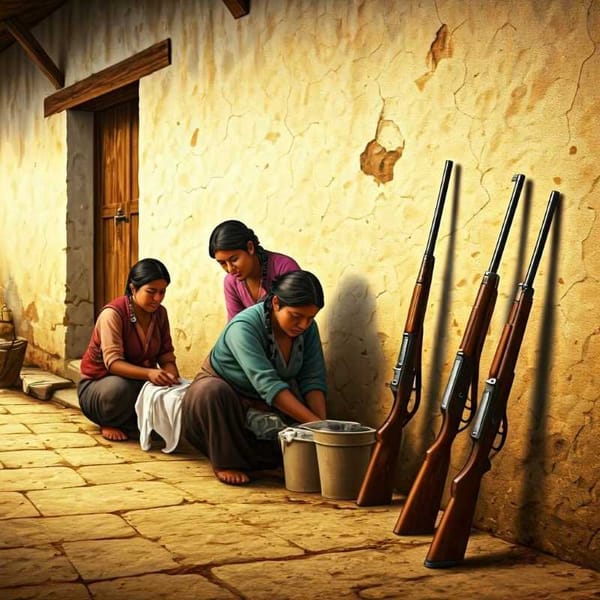When does wintertime 2022 start in Mexico?
It's possible that the clock won't be adjusted again after the winter of 2022: When does it alter, and which states in the country are exempt from having the adjustment applied to them?

Winter time 2022 is a practice that consists of adjusting the clock time to take advantage of natural light, but when does it change and in which states will it apply?
It is important to point out that the Chamber of Deputies approved by a majority vote the elimination of daylight saving time, which passed to the Senate for validation. If it is made official, October will be the last time the time will change.
With the incorporation of Daylight Saving Time in 2022, both sunrise and sunset will occur earlier. That is, there will be more sunlight in the mornings for you to carry out your daily activities.
When does winter time 2022 start in Mexico?
According to the National Metrology Center (CENAM), winter 2022 will begin on October 30, in most of the states of the country, except for those located on the border with the United States.
When does the 2022 winter time change in the border area?
In the country's border strip, where the 2022 winter time will begin on November 6, these are the states and municipalities that will have to change the time of their clocks:
Baja California: in the municipalities of Tijuana, Mexicali, Ensenada, Rosarito Beach, and Tecate.
Chihuahua: in the municipalities of Juárez, Ojinaga, Ascensión, Coyame del Sotol, Guadalupe, Janos, Manuel Benavides, and Práxedis G. Guerrero.
Coahuila: in the municipalities of Acuña, Piedras Negras, Guerrero, Hidalgo, Jiménez, Zaragoza, Nava and Ocampo.
Nuevo Leon: in the municipalities of Anahuac and Los Aldama.
Tamaulipas: in the municipalities of Nuevo Laredo, Reynosa, Matamoros, Camargo, Guerrero, Gustavo Díaz Ordaz, Mier, Miguel Alemán, Río Bravo and Valle Hermoso.
How will the 2022 winter time be in Sonora and Quintana Roo?
The states of Quintana Roo and Sonora will not have to modify the time of their clocks, since they do not contemplate the application of this schedule, due to economic and tourist issues.
Winter time 2022: Is the time on the clock forward or backward?
To make the time change, you will have to set your clock back one hour during the early morning of October 29, which will give you one hour more of sleep.
Border states and municipalities will set their clocks back one hour on the first Sunday of November, that is, on the 6th. Finally, those residing in Sonora and Quintana Roo will not have to change their clocks.
Why did the Mexican Congress approve the elimination of daylight saving time?
Since 1996, daylight saving time has been practiced in Mexico to take advantage of natural daylight. It was thought that moving the clock forward one hour would serve to save energy and have a positive impact on the ecological, social, and economic levels.
Among the reasons for eliminating daylight saving time were health effects. According to studies cited by the Ministry of Health (SSA), daylight saving time was related to an increase in the rate of heart attacks, mainly in the first week of its implementation. In addition, they showed that energy savings were only 1%.
Pros and cons of daylight saving time
Advantages
Daylight Saving Time has many darker and shorter days compared to Daylight Saving Time. The act of setting the clock back one hour will cause people to conduct their activities in sunlight. So the days will have less daylight time and will seem shorter and the nights will seem longer, as the sun rises and sets earlier.
In the wintertime, the sun will start to rise at 6:30 am and will set around 7:00 pm. During wintertime, the body receives fewer hours of daylight. According to experts, this favors a greater secretion of melatonin, a hormone that helps us to fall asleep, that is, we rest more and better.
Disadvantages
Our days will have fewer hours of natural light and may seem much shorter than before because night falls quickly. Having fewer daylight hours during the day could also increase robberies and road accidents. A report by the Observatorio Nacional Ciudadano (National Citizen Observatory) states that the evening is the time when most crimes are committed in Mexico City.
Studies by experts also point out that during daylight saving time, people tend to take advantage of sunlight and this is reflected in the consumption of electricity. This is why returning to wintertime could increase the consumption of electric energy since it gets dark earlier and we will have to resort to artificial lighting.
How to combat the time change?
Modify your bedtime routine 3 days before the time change. This can help alert your body and mind that you are changing something.
Take advantage of every moment of sunshine (and vitamin D). As explained, vitamin D is related to mood (among others), so take advantage of sunny times of the day as you can to come in contact with sunlight to promote its absorption.
Get regular physical activity and promote the release of endorphins. Try to establish a routine of physical activity to promote the release of endorphins, related to pleasure and well-being. If you were already physically active, keep it up despite the lack of sunlight.
Take care of your social life. Do not let the lack of sunlight prevent you from doing those social activities that you used to enjoy and that helped your mood: keep meeting friends, going out for a walk, etc.
Seek professional advice. These guidelines can help you to adapt a little easier, but if after one or two weeks you still perceive difficulties derived from the time change, you must go to a psychologist to assess your case and see how to overcome this situation in the best possible way.




